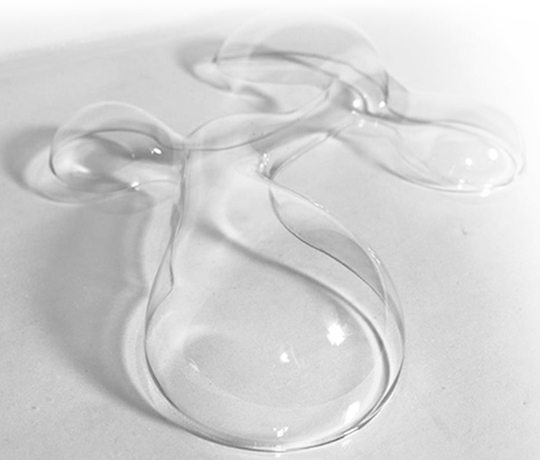Studio 20
How Virtual Becomes Real
Alberto Pugnale and Atreyu De Lacy

Studio Description
Computational and Freeform applications are growing exponentially in architecture. Free suggests the opportunity to generate architectural form, irrespective of any compositional, structural or construction principle; Computation offers tools and strategies to drive and control such freedom.
In this framework, the principle of Form Resistance welds structure and architecture. Elegance is achieved through a unique creative-generative process, which is present, for instance, in the iconic works by Frei Otto, Jörg Schlaich, Heinz Isler and Buro Happold.
This 8th edition of How Virtual Becomes Real will continue the research into the design-to-construction working methods for form-resistant structures, which aims to synthesise the virtual and the real by means of both physical form-finding and numerical models.
Studio Outcomes
WEEKS 1-4: Workshops & Lectures on parametric design, form-finding, optimisation, technology and fabrication of shells/gridshells. Students are expected to: [1] generate & manage free-form geometries using Rhino; [2] define and run Grasshopper routines for design automation, that is surface discretisation, panelling; [3] perform structural FEM analyses using Karamba; [4] prepare 3D parametric models for fabrication with laser cutters, 3D printers or other digital fabrication tools.
WEEKS 5-12: Design Project individual and group supervision sessions. Students are expected to: [1] express & represent architecture through diagrams, renders and technical drawings; [2] design and prototype structures - scales 1:50 to 1:1; [3] regularly communicate ideas through verbal presentations, posters and models.
PREREQUISITES
Competency in Rhinoceros, Grasshopper, Fabrication
Studio Leaders
ALBERTO PUGNALE: Architect, BArch MSc PhD. He was Assistant Professor of Structures at Aalborg University, Denmark. In 2007 he won the IASS Hangai Prize for his studies on complex architectural-structural bodies. Research fields: Computational Morphogenesis of free-form structures, reciprocal structures and history of construction.
ATREYU DE LACY: Structural Engineer, MEng MIStructE CEng. Atreyu is a Chartered Structural Engineer with 11+years’ experience working in Australia and the UK. He has worked with some of the world’s most renowned architectural practices on projects within Australia, UK, Europe, Brazil and the Middle-East.
Reading & Reference
Adriaenssens S., Block P., Veenendaal D., Williams C., Shell Structures for Architecture: Form Finding and Optimization, Routledge, 2014.
Chilton J., Tang G., Timber Gridshells: Architecture, Structure and Craft, Routledge, 2016.
H., Structure Systems, 3rd edition, 2007 (1967).
Holgate A..,The Art of Structural Engineering. The work of Jörg Schlaich and his Team, Axel Menges, Stuttgart, London, 1997.
McLean W., Structural engineering for Architects: A Handbook, Laurence King Publishing, 2014.
Menges A., Material Computation, Architectural Design, March/April 2012.
Oxman Ri., Oxman Ro.,The new structuralism, Architectural Design, July/August 2010.
Peters B. and De Kestelier (Eds), Computation Works: The Building of Algorithmic Thought, Architectural Design, March/April 2013.
Tedeschi A., AAD Algorithms-Aided Design, Le Penseur, 2014.
Sandaker B.N., The structural basis of architecture, Routledge, 2011.
http://www.albertopugnale.com/resources/
http://www.albertopugnale.com/2016/07/19/how-virtual-becomes-real-2016/
http://www.albertopugnale.com/2015/06/10/how-virtual-becomes-real-2015/
http://www.grasshopper3d.com/
http://www.karamba3d.com/ (See the results of the previous editions of this studio)
Further references will be provided during the semester.
ST1/20 Monday 6:15-9:15PM, MSD Room 140
ST2/20 Thursday 6:15-9:15PM, MSD Room 140